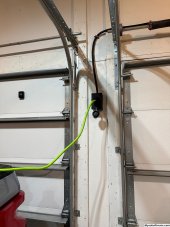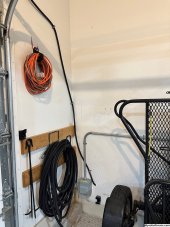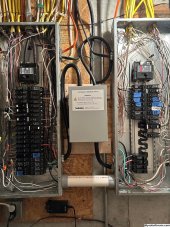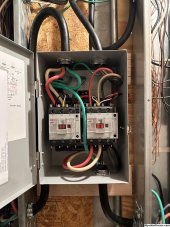I'm on the Lightning forums with the OP cdherman. I have a Lightning ER and initially connected to our main home (200a service) back feeding with a 30a 240v breaker. I had to remove the ground at the generator inlet box so the Lightning wouldn't throw the ground fault error. I read all the neutral/ground opinions on the Lightning forums.
It makes sense to me that there is still protection with the Lightning ground removed. The truck end still has the Lightning GFI protection and the house end still has the neutral/ground bond in the main panel. This being said I would still make sure you generator inlet is wired so it can't get damaged and don't plug into the truck with the Pro Power active.
I ended up installing an automatic 3-pole transfer switch and isolated our subpanel with critical loads. I did this mostly so I wouldn't have to walk down to the basement and flip breakers to power the house from the Lightning. The transfer switch I used is pretty affordable but only 50 amps. However, that is plenty for what I am doing. I have been powering this critical load panel during our 4 - 8 pm peak time where our rates go to .36kwh On this plan our Midnight to 6:00 am rates are .03kwh in the summer and .02kwh in the winter. Obviously we charge at night. We are a two EV household and my initial calculations are we may save up to $1,500 a year on this rate plan charging after midnight and running the AC and furnace (gas obviously) from 4:00 - 8:00 using the Pro Power when we are in town.
I discovered a handful of ground faults at Insteon light switches that I created when I was young, dumb and impatient. Using the 3-pole transfer switch with the Lightning ground connected forced me to find and fix these problems.
This winter I plan to connect the Lightning to our off grid inverter at our place in Montana. I suspect I will have the same ground fault dilemma I'm not going to install a transfer switch and critical load panel there as our inverter is only 5,500 watts (Schneider Conext XW+ 5548). Our battery bank is a 13kwh Lishen 16s so the Lightning has 10 times the capacity. I can charge the Lightning when the sun is out at 8 amps.
So I am comfortable disconnecting the ground at the generator input as long as the wiring is out of harm's way. I think that is what I will have to do to make it work with our XW+ inverter.
When we downsize from our main home I will remove the transfer switch, the breakers and the generator input wiring. I'm guessing 10/4 SOOW without conduit is a violation. The subpanel will be wired back to the main panel.














